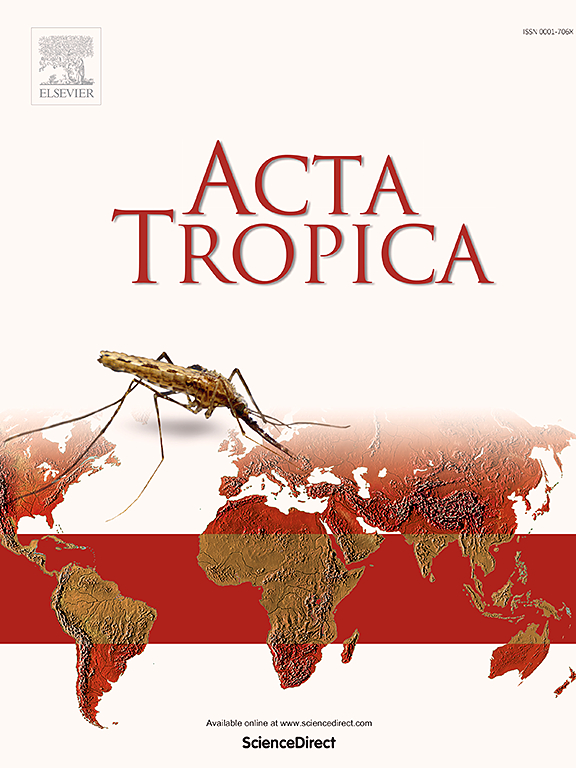Epidemiological and molecular analysis of a rabies outbreak in the state of bahia, Brazil
IF 2.1
3区 医学
Q2 PARASITOLOGY
引用次数: 0
Abstract
This study aimed to genetically characterize rabies virus strains detected in biological samples from 55 laboratory-confirmed rabies-positive animals in the state of Bahia during an outbreak that occurred between 2007–2009. Samples from one donkey, one lesser spear-nosed bat (Phyllostomus elongatus), two crab-eating foxes (Cerdocyon thous), eight common vampire bats (Desmodus rotundus) and 43 bovines were submitted to rabies diagnosis. All samples were positive in the direct immunofluorescence test (DAFT), mice inoculation test (MIT) and reverse transcriptase polymerase chain reaction by (RT-PCR), followed by nucleotide sequencing and phylogenic analysis. The phylogeny presented two viral clades, one bat-specific and one carnivore-specific, with existence of nine sub-clusters associated to Desmodus rotundus and infection of bovines with the carnivore-specific strain. Phylogenetic analysis exposes a complex epidemiology that needs further elucidation for the improvement of control measures for rabies.
巴西巴伊亚州狂犬病暴发的流行病学和分子分析
本研究旨在对2007-2009年暴发期间在巴伊亚州55只实验室确认的狂犬病阳性动物的生物样本中检测到的狂犬病毒株进行遗传表征。对1头驴、1只长尾小矛鼻蝠(Phyllostomus elongatus)、2只食蟹狐(Cerdocyon thous)、8只普通吸血蝙蝠(Desmodus rotundus)和43头牛进行了狂犬病诊断。所有样品经直接免疫荧光试验(DAFT)、小鼠接种试验(MIT)和逆转录聚合酶链反应(RT-PCR)检测均呈阳性,并进行核苷酸测序和系统发育分析。该病毒的系统发育分为两个分支,一个是蝙蝠特异性的,一个是食肉动物特异性的,其中有9个亚群与圆形假丝霉和食肉动物特异性菌株感染牛有关。系统发育分析揭示了一种复杂的流行病学,需要进一步阐明,以改善狂犬病的控制措施。
本文章由计算机程序翻译,如有差异,请以英文原文为准。
求助全文
约1分钟内获得全文
求助全文
来源期刊

Acta tropica
医学-寄生虫学
CiteScore
5.40
自引率
11.10%
发文量
383
审稿时长
37 days
期刊介绍:
Acta Tropica, is an international journal on infectious diseases that covers public health sciences and biomedical research with particular emphasis on topics relevant to human and animal health in the tropics and the subtropics.
 求助内容:
求助内容: 应助结果提醒方式:
应助结果提醒方式:


